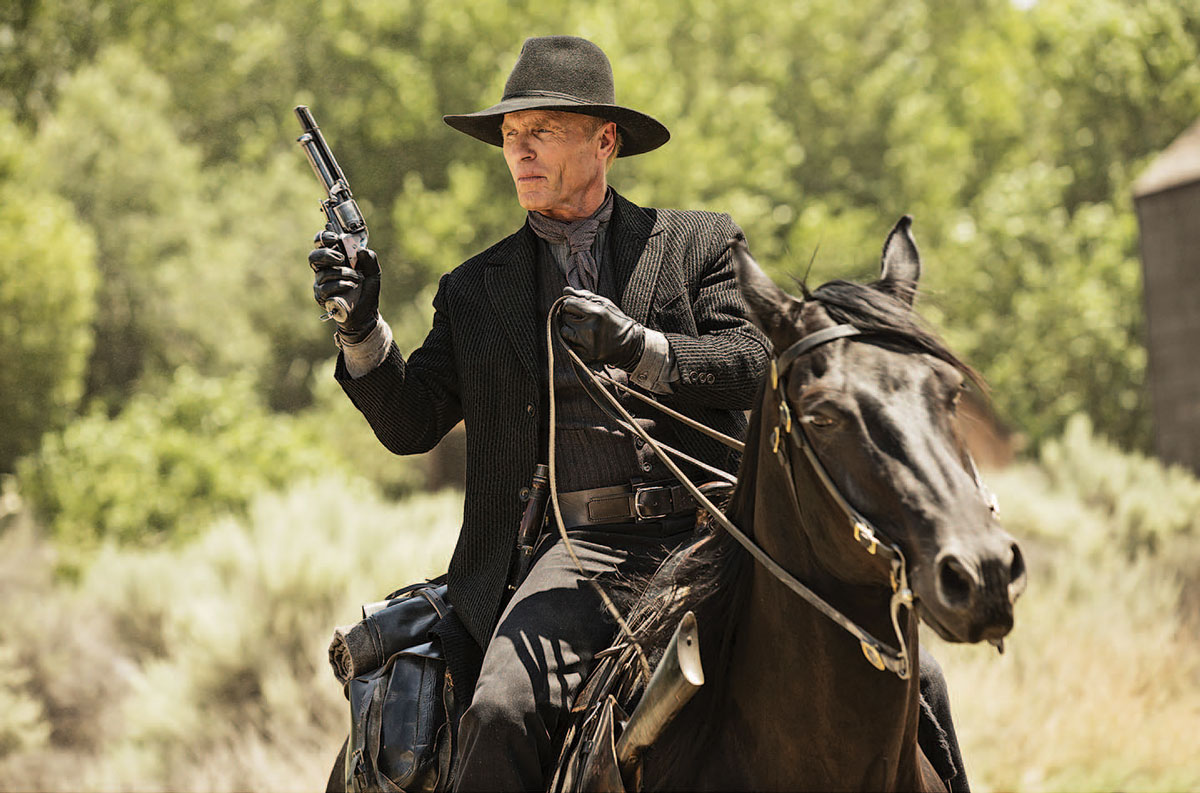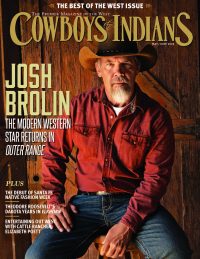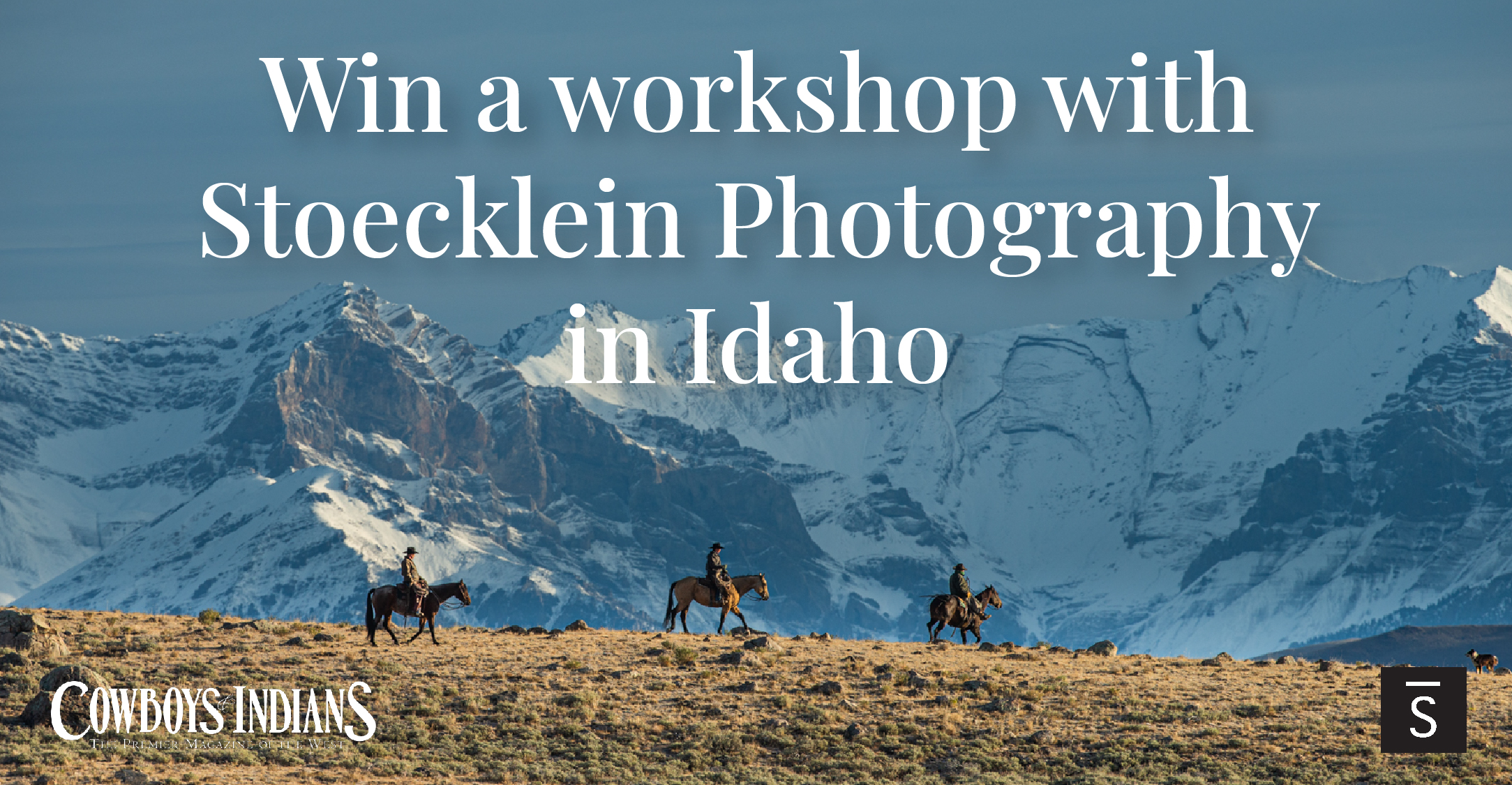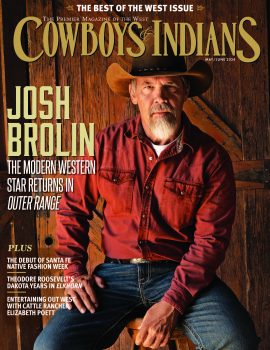As the respected actor gets ready for another season of Westworld, he looks back to Appaloosa, Pollock, and other career highlights.
With four decades of stage and screen work under his belt, Ed Harris has proven that he can excel at any kind of part. His breakout film role in 1983’s The Right Stuff put him in the spacesuit of real-life hero John Glenn. He explored the deep sea in James Cameron’s 1989 sci-fi creeper The Abyss. He showed intensity as a cutthroat real estate salesman in 1992’s Glengarry Glen Ross and broke hearts as a dying man in 2002’s The Hours. And it’d be impossible to overlook his note-perfect, Golden Globe-winning portrayal of Sen. John McCain in the 2012 HBO movie Game Change.
There are a few roles in particular for which C&I readers likely know and love Harris. In 2000, he directed, produced, and starred in Pollock, transforming himself into the brilliant but self-destructive artist Jackson Pollock. He earned rave reviews not only for his lead acting performance but for his deft touch behind the camera. He applied the same directing chops to Appaloosa, the 2008 adaptation of a popular Robert B. Parker western novel in which Harris starred opposite Viggo Mortensen. They played lawmen hired to protect a desperate town, and their characters’ back-and-forth dialogue was just as thrilling as the obligatory shoot’em-up action.
Harris’ most recent iconic part comes in a decidedly nontraditional, sci-fi western, complete with dystopian themes and artificial intelligence. Later this year, HBO’s Westworld will debut its second season after leaving viewers mystified and wanting more during its initial run. Harris had a lot to do with the series’ cultural fascination: His strong but mysterious Man in Black character equally intimidates and confounds. Fans will tune in for the second season looking to find out more about his relationship to the immersive adult theme park upon which the show is built.
After the 67-year-old actor agreed to shoot a cover for C&I at the California wild horse sanctuary Return to Freedom, Harris engaged in a friendly conversation about Westworld, other highlights from his illustrious career, and possible plans for more traditional westerns with Appaloosa screenwriting partner and author Robert Knott.

Ed Harris has mysterious goals as the Man in Black in HBO’s Westworld. Photography: HBO/Photofest
Cowboys & Indians: Congratulations on the awards and rousing critical reception for Westworld. Were you surprised at the success of the series?
Ed Harris: When it was airing for the first time, I was in London with my wife, Amy [Madigan], doing the play Buried Child for three or four months. So, when people would come up with a photograph of the Man in Black to ask for my autograph, I assumed that the series was doing pretty good. I was most happy for two of the producers, Lisa Joy and Susan Ekins, who have been developing the series for several years.
C&I: Give us some of your own insight into the character, since aspects of him are so mysterious.
Harris: My character has been going to the park a month a year for 30 years. [Spoiler ahead.] The audience finds out late in the season that the Man in Black’s real name is William, and he now owns Westworld and decided not to go back into the real world — it was made pretty clear that I was not a robot. ... He’s decided not to leave the park, as there is something that he has to get to the bottom of there. It has been fun to play the Man in Black. When I got together with the wardrobe folks, I was very concerned about finding the right hat. It felt crucial. When I got the outfit together, it was great. I just put that thing on, and suddenly I’m the Man in Black. There you go. It’s very empowering, in a good way.
C&I: What can you tell our readers about what to expect from the upcoming second season?
Harris: Well, not much. One thing I can say is that all these [artificial intelligence] beings are set free, and the stakes will be much higher as they will be after revenge against their human counterparts. I only work two or three days a week on set, and we shoot just about an hour north of where we live in Malibu [California]. We also shoot a month or so in Utah around the Moab area for brand exteriors that you can’t find in the Los Angeles area.
C&I: The original 1973 Westworld movie was written and directed by Michael Crichton, who also penned the novel and screenplay for Jurassic Park. A common theme in his work has to do with technology gone awry and artificial intelligence rebelling. Was it important to emphasize the theme in the updated series?
Harris: I’m not trying to be dismissive, but I don’t really have much to say about his view on technology. However, my first movie was Crichton’s Coma [Harris played a young pathology resident] with Geneviève Bujold [who starred as a surgical resident who discovers a plot to harvest human organs].
I recently read a piece in National Geographic on artificial intelligence, on how we are starting to change mankind through robotic appendages and other nonhuman changes. At the end of the first season, all of these AI characters have been released from their controlled surroundings and are full of revenge. The stakes will be much higher for the humans at the park.
C&I: Ten years ago you made Appaloosa, an adaptation of the first in the Cole and Hitch series of western novels by the acclaimed novelist Robert B. Parker. The movie has your imprint all over it, as star [playing Virgil Cole opposite Viggo Mortensen’s Everett Hitch], director, and co-writer with your friend Robert Knott. Tell us a bit about the experience of making it.
Harris: I guess it was 10 years ago. Well, I think that Appaloosa is a really good story that we made in a more classical vein than most westerns are filmed today. It felt genuine to me from the horse tack, guns, and other weapons to the historic--style buildings and what was inside them, along with the other set designs and props. It was really fun doing it. We all paid such attention to detail, and all that attention really paid off.
This was the first book in the Cole and Hitch series. My daughter and I were doing a horseback riding trip in Ireland, and I brought the book along on the trip. I think I had just finished the third chapter and was so taken by the characters and story that I called my agent to see if it might be available to option.
C&I: New York Times film critic A.O. Scott had this to say about the film: “One important gunfight goes by so quickly and anti-climactically that even Everett remarks on how fast it was over. ‘That’s because the folks knew how to shoot,’ Virgil says, offering an implicit defense of Mr. Harris’s crafty and unassuming approach to filmmaking.”
Harris: There you go. I think my directing was unassuming, although I don’t know how crafty it was. But it sure was fun making the movie.
C&I: Appaloosa has also been called a violent period western, as Virgil and Everett make their living as gunmen for hire. But, on another level, it is a relationship movie about the two characters.
Harris: My buddy and bestselling writer Robert Knott and I co-wrote the screenplay, and I really felt that we captured the relationship that Parker put on the page between those two cowboys. I gave the book to Viggo at the Toronto [International] Film Festival in 2005 when we were there for A History of Violence. There was no one else I really wanted to do the film with, and I certainly never considered anyone else. I just thought he and I would make a strong partnership on screen.
I think Cole and Everett would be a great twosome to have on a well-made television series. We would have done a sequel to Appaloosa, but Viggo didn’t want to play to same character twice. He’s really a great and creative guy and I’d love to work with him again. He can talk all day long. ... You won’t get that from me. ...
Parker wrote four books in the series, and then Robert took over after he passed away and wrote another four or five. I’m really proud of Robert; he’s my best buddy who works his butt off to keep the series going.
C&I: You first explored your directing chops with 2000’s Pollock, the biopic about the abstract painter Jackson Pollock. You even taught yourself to paint several years before the cameras rolled. What are your impressions now about the intensity of that project?
Harris: The only way I know how to direct at this point is to act in the project as well. I had immersed myself in Pollock entirely, so much so that I lost myself in the role and the film. The script ... was approaching 230 pages and I also had to get the rights for the paintings I wanted to profile in the film. I’ve always loved working with fellow actors, and when [Robert] De Niro got wind of the project, he called me up and said that I should direct it myself. That project became my obsession.
C&I: You mentioned before that you and your wife recently starred in the late Sam Shepard’s Pulitzer Prize-winning play Buried Child. What was it like working together?
Harris: We were in New York and London for 125 performances, and we both felt that it was a worthy and very good production. It’s a tough play to do, as I was couch-bound for the entire play. The only time my character gets up, he falls down, and then he’s on the floor for the rest of the show. But it’s still very physical, and the better shape I’m in, the more decrepit I can be. The story is about a dysfunctional, strange, and eccentric family on a farm in Southern Illinois with a deep, dark secret. Amy and I love working together, and during this time we were together 24/7.
C&I: Now to a very painful and personal question: The great actor, playwright, and director Sam Shepard was both your friend and collaborator. He passed away after your recent run in the play. How are you coping with his loss?
Harris: I knew Sam was ill, but when I got the call that he had died, something broke and flew away inside of me. He has been a monumental influence on my life in a number of ways. His great work as a playwright, his collections of stories, and his film work will continue to inspire and enrich the lives of people all over this earth ... but his physical presence on this planet will be sorely missed. He was a great observer, he paid attention, and he lived his life the way he wanted to. He was my friend. I’m having a hard time wrapping my head around the fact that he’s not here anymore.
Be sure to pick up the January 2018 issue of C&I on newsstands now (or click here to order the magazine) to see more amazing shots and get an exclusive preview of what’s next for both Ed Harris and Robert Knott.













